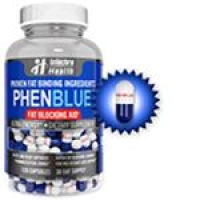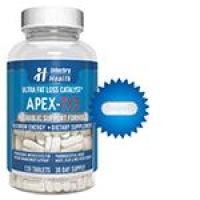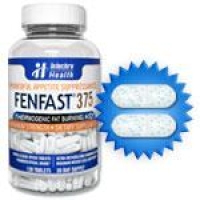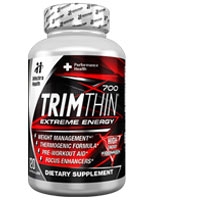Gluten-Free Diet
- Hits: 7157
A gluten-free diet means avoiding all foods that contain wheat (including spelt, triticale, and kamut), rye, barley, and possibly oats - in other words, most grain, pasta, cereal, and many processed foods. Despite these restrictions, people with celiac disease can eat a well-balanced diet with a variety of foods, including bread and pasta. For example, instead of wheat flour, people can use potato, rice, soy, or bean flour. Or, they can buy gluten-free bread, pasta, and other products from special food companies.
Gluten-Free Diet and Celiac Disease
Whether people with celiac disease should avoid oats is controversial because some people have been able to eat oats without having a reaction. Scientists are doing studies to find out whether people with celiac disease can tolerate oats. Until the studies are complete, people with celiac disease should follow their physician or dietitian's advice about eating oats. (Read the American Dietetic Association's conditional acceptance of oats as safe for people with celiac disease. See: Oats and the Gluten-Free Diet - Journal of the American Dietetic Association, March 2003 - Volume 103 - Number 3.)
Plain meat, fish, rice, fruits, and vegetables do not contain gluten, so people with celiac disease can eat as much of these foods as they like. Examples of foods that are safe to eat and those that are not are provided below.
Gluten-Free Diet Is Complicated
The gluten-free diet is complicated. It requires a completely new approach to eating that affects a person's entire life. People with celiac disease have to be extremely careful about what they buy for lunch at school or work, eat at cocktail parties, or grab from the refrigerator for a midnight snack. Eating out can be a challenge as the person with celiac disease learns to scrutinize the menu for foods with gluten and question the waiter or chef about possible hidden sources of gluten. Hidden sources of gluten include additives, preservatives, and stabilizers found in processed food, medicines, and mouthwash. If ingredients are not itemized, you may want to check with the manufacturer of the product. With practice, screening for gluten becomes second nature.
A dietitian, a health care professional who specializes in food and nutrition, can help people learn about their new diet. Also, support groups are particularly helpful for newly diagnosed people and their families as they learn to adjust to a new way of life.
Foods Recommended for a Gluten-Free Diet
Breads or bread products made from corn, rice, soy, arrowroot corn or potato starch, pea, potato or whole-bean flour, tapioca, sago, rice bran, cornmeal, buckwheat, millet, flax, teff, sorghum, amaranth, and quinoa. Hot cereals made from soy, hominy, hominy grits, brown and white rice, buckwheat groats, millet, cornmeal, and quinoa flakes. Puffed corn, rice or millet, and other rice and corn made with allowed ingredients. Rice, rice noodles, and pastas made from allowed ingredients. Some rice crackers and cakes, popped corn cakes made from allowed ingredients.
Foods To Omit from a Gluten-Free Diet
Breads and baked products containing wheat, rye, triticale, barley, oats, wheat germ or bran, graham, gluten or durum flour, wheat starch, oat bran, bulgur, farina, wheat-based semolina, spelt, kamuto. Cereals made from wheat, rye, triticale, barley, and oats; cereals with added malt extract and malt flavorings. Pastas made from ingredients above. Most crackers. (Read the American Dietetic Association's conditional acceptance of oats as safe for people with celiac disease. See: Oats and the Gluten-Free Diet - Journal of the American Dietetic Association, March 2003 - Volume 103 - Number 3.)
Diet Tips for a Gluten-Free Diet
Use corn, rice, soy, arrowroot, tapioca, and potato flours or a mixture instead of wheat flours in recipes. Experiment with gluten-free products. Some may be purchased from your supermarket, health food store, or direct from the manufacturer.
Food Serving Size
1 slice bread
1 cup ready-to-eat cereal
1/2 cup cooked cereal, rice, or pasta
1/2 bun, bagel, or English muffin
Vegetables: 3-5 servings each day
Foods Recommended
All plain, fresh, frozen, or canned vegetables made with allowed ingredients.
Foods To Omit
Any creamed or breaded vegetables (unless allowed ingredients are used), canned baked beans, some french fries.
Diet Tips
Buy plain, frozen, or canned vegetables and season with herbs, spices, or sauces made with allowed ingredients.
Food Serving Size
1 cup raw leafy
1/2 cup cooked or chopped
3/4 cup juice
Fruits: 2-4 servings each day
Foods Recommended
All fruits and fruit juices.
Foods To Omit
Some commercial fruit pie fillings and dried fruit.
Food Serving Size
1 medium size fruit
1/2 cup canned fruit
3/4 cup fruit juice
1/4 cup dried fruit
Milk, Yogurt, and Cheese: 2-3 servings each day
Foods Recommended
All milk and milk products except those made with gluten additives. Aged cheese.
Foods To Omit
Malted milk Some milk drinks, flavored or frozen yogurt.
Diet Tips
Contact the food manufacturer for product information if the ingredient is not listed on the label.
Food Serving Size
1 cup milk or yogurt
1.5 oz natural cheese
2 oz processed cheese
Meats, Poultry, Fish, Dry Beans and Peas, Eggs, and Nuts:
2-3 servings or total of 6 oz daily
Foods Recommended
All meat, poultry, fish, and shellfish; eggs. Dry peas and beans, nuts, peanut butter, soybean. Cold cuts, frankfurters, or sausage without fillers.
Foods To Omit
Any prepared with wheat, rye, oats, barley, gluten stabilizers, or fillers including some frankfurters, cold cuts, sandwich spreads, sausages, and canned meats. Self-basting turkey. Some egg substitutes.
Diet Tips
When dining out, select meat, poultry, or fish made without breading, gravies, or sauces.
Food Serving Size
2-3 oz cooked
1 egg ( = 1oz meat)
1/2 cup cooked beans ( = 1oz meat)
2 tbsp peanut butter ( = 1oz meat)
1/3 cup nuts ( = 1oz meat)
Fats, Snacks, Sweets, Condiments, and Beverages
Foods Recommended
Butter, margarine, salad dressings, sauces, soups, and desserts made with allowed ingredients. Sugar, honey, jelly, jam, hard candy, plain chocolate, coconut, molasses, marshmallows, meringues. Pure instant or ground coffee, tea, carbonated drinks, wine (made in U.S.), rum. Most seasonings and flavorings
Foods To Omit
Commercial salad dressings, prepared soups, condiments, sauces and seasonings prepared with ingredients listed above. Hot cocoa mixes, nondairy cream substitutes, flavored instant coffee, herbal tea, alcohol distilled from cereals such as gin, vodka, whiskey, and beer; ale, cereal, and malted beverages, licorice
Diet Tips
Store all gluten-free products in your refrigerator or freezer because they do not contain preservatives. Remember to avoid sauces, gravies, canned fish and other products with HVP/HPP made from wheat protein.
Source: National Institute of Diabetes and Digestive and Kidney Diseases. U.S. Department of Health and Human Services, National Institutes of Health, 2002. Website: www.niddk.nih.gov/ 2001, the American Dietetic Association. "Patient Education Materials: Supplement to the Manual of Clinical Dietetics," 3rd ed.








